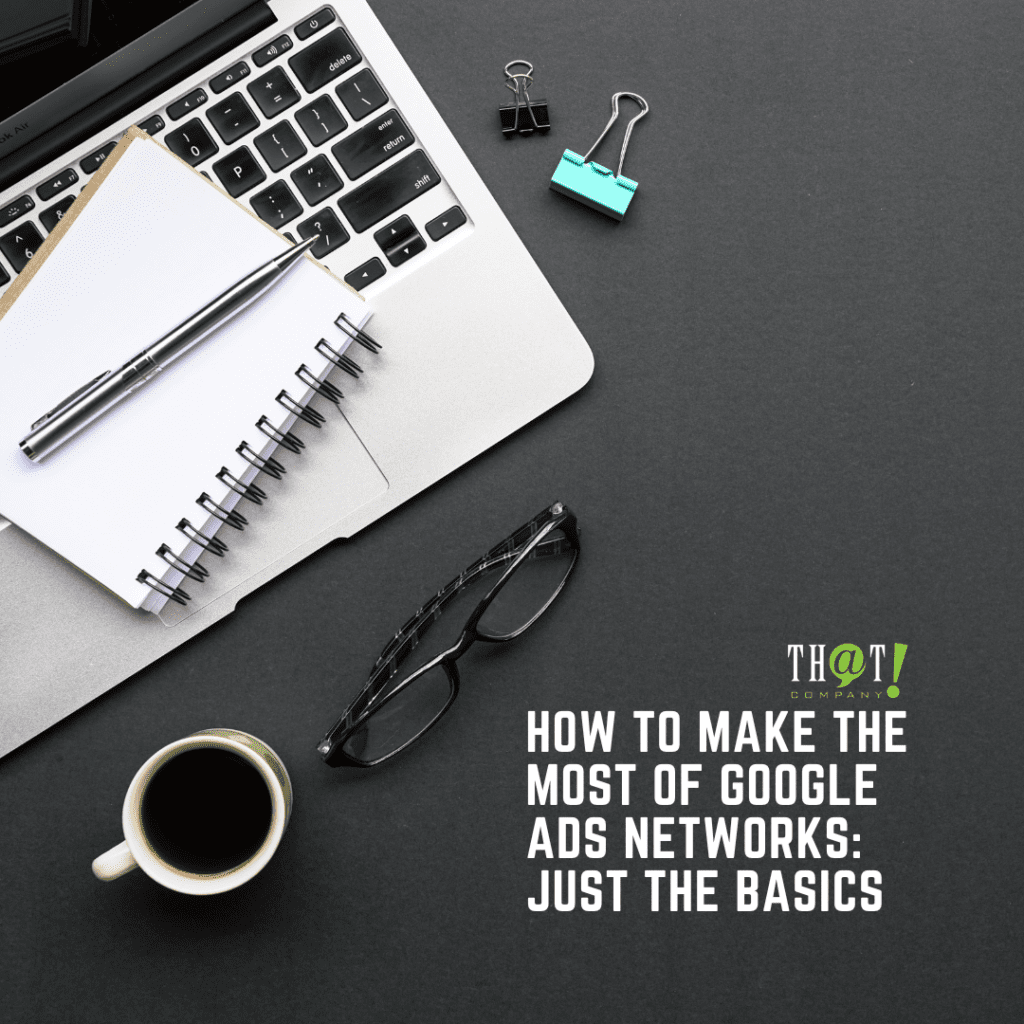
It’s challenging to know which strategies will offer the best results as Google continues to develop and extend its advertising offerings. Before launching any Google Ads campaign, there are several aspects to consider. Most of the time, you’ll want to divide your Google Ads budget across a few different campaigns to balance your different objectives. The best approach to achieve optimum performance depends on the right mix of the ads you’re running and the display network where they’re being seen.
Because Google is constantly adding new capabilities, it’s critical to grasp the fundamentals of account creation when targeting your audience. Within Google Ads, there are two major divisions: display and search. When you initially create a campaign, you may find an option to include either or both of these in the settings. The Google display network (or GDN) advertisements appear on websites, in video platforms, and on applications. Meanwhile, the search network ads show on the search results page of Google and it’s partners. Within search there is another important division, between Google itself, and its search partners. Many marketers find that performance varied greatly between the Google display network, Google search, and Google partner’s search. However, what seems to be a clever strategy in one of those three to get additional awareness may not help you measure success – even when using the same keywords and text ads.
The Google search network (and the Google partners’ search network) is a marketplace where businesses can pay to have ads for their websites appear just above or below organic search results for specific keywords You can also have a white label partnership that does white label PPC management service that can transform any website into a profitable traffic domain.
The main idea is that you choose keywords to promote your business. A keyword is a word or phrase that a user types into a search engine and subsequently sees search results – potentially including your ad. Only the keywords you choose (and those closely related) will trigger your adverts. Google tracks how many people click on your advertisement and charges you for each one. The price is determined by a silent auction that takes place in the Google Ads interface between all advertisers interested in the keyword. To learn more about that silent auction process, click here.
They also track impressions, which is the number of times your ad was displayed when consumers searched for that keyword. For example, a person may type in a keyword one time, click six of the search engine results, and click the back button to return to their original search each time. This would give Google seven opportunities to show your ad, one for the original search, and six for each click back to it. If Google showed your ad five of those seven times, you would receive five impressions. It is standard for Google to provide advertisers with the data of the impressions, clicks, and costs per click for each keyword
Ways the Google Display Network is Different
 In the Google display network, these ads are shown on web pages that are related to the keyword, (or otherwise targeted). Generally, there are far more impressions in the Google display network, and the costs per click are significantly cheaper, but the click through rates are far lower, and the traffic quality is not as good. By its very nature, the display network extends its reach to a larger audience. When you select this option, you are handing over power to Google You are allowing them to find any appropriate website that includes your keywords, and shows your ads there. In contrast, you’re targeting an active user who wants to actively research anything related to the campaign’s keywords by keeping everything in search.
In the Google display network, these ads are shown on web pages that are related to the keyword, (or otherwise targeted). Generally, there are far more impressions in the Google display network, and the costs per click are significantly cheaper, but the click through rates are far lower, and the traffic quality is not as good. By its very nature, the display network extends its reach to a larger audience. When you select this option, you are handing over power to Google You are allowing them to find any appropriate website that includes your keywords, and shows your ads there. In contrast, you’re targeting an active user who wants to actively research anything related to the campaign’s keywords by keeping everything in search.
Although the display network will increase visibility, it is less targeted and generally should not be employed by companies on a tight budget or who require high conversion rates. People targeted with display advertising may not be ready to purchase. These users are at the bottom of the conversion funnel. With an ad driven by copy, getting clicks is much more in this network, and click through rates are typically much lower. Image and video ads tend to have a higher click through rates, but are still typically lower than in search. The display is for companies that need to raise their awareness levels. It is a fantastic branding tool and is the preferred platform for remarketing/retargeting. The display network’s ad space is excellent for reaching and broadening your audience.
[bctt tweet=”The Google display network (or GDN) advertisements appear on websites, in video platforms, and on applications. Meanwhile, the search network ads show on the search results page of Google and its partners.” username=”ThatCompanycom”]Understand Your Data
 The display network’s impressions and clicks are not attributed to the keywords inside your campaign. This is because those impressions and clicks aren’t genuinely “searched.”. The content on the page. As a result, to assess performance, you must go deeper. It is smart to have ad groups with tight clusters of keywords if that is how you are targeting. You can also target by interests (generally a broader category encompassing many clusters of keywords) by individual placements, and/or by audiences. In any event, Google will provide you with both high-level summary data and performance for individual websites, or placements. However, you are targeting, it is wise to check the individual placements where your ads are being shown, blocking under-performers and devoting more budget towards better performers.
The display network’s impressions and clicks are not attributed to the keywords inside your campaign. This is because those impressions and clicks aren’t genuinely “searched.”. The content on the page. As a result, to assess performance, you must go deeper. It is smart to have ad groups with tight clusters of keywords if that is how you are targeting. You can also target by interests (generally a broader category encompassing many clusters of keywords) by individual placements, and/or by audiences. In any event, Google will provide you with both high-level summary data and performance for individual websites, or placements. However, you are targeting, it is wise to check the individual placements where your ads are being shown, blocking under-performers and devoting more budget towards better performers.
To measure performance, go to each ad group in Google Ads and examine how the display network and search network function. Because users are at various conversion funnel stages, it’s critical to know the industry benchmarks for each network while analyzing data. As a result, if you’re utilizing both Google Ad networks at the same time, it’s a good idea to split your search and display ads into different campaigns.
Familiarize Yourself with the Conversion Funnel
 There are several steps in the conversion funnel, including awareness, deliberation, and decision. Most users advertisers encounter on the display network are in the awareness stage. The user is typically further down the funnel (deliberation) while in the search network.
There are several steps in the conversion funnel, including awareness, deliberation, and decision. Most users advertisers encounter on the display network are in the awareness stage. The user is typically further down the funnel (deliberation) while in the search network.
Understanding the funnel from a statistics standpoint is helpful, but it’s also necessary for writing good ad copy. You should tailor your communications to the user’s current position in the conversion funnel. If you met someone at a networking event, you would never immediately jump to ask them to buy from you. In the same way, it is critical to reaching the user where they are by writing appropriate ad copy.
It is not cost-effective for everyone to use a dual-network technique that combines both search and display. So, before you dive into either, think about your objectives and see whether both would help you achieve them. If you do decide to use a dual-network approach, be sure to segregate them into separate campaigns. You’ll be able to effectively target your audience with straightforward content while also obtaining critical data points fast and correctly if you have two separate network-specific campaigns.
Google Ads is one of the most powerful advertising strategies a company can utilize because of its reach and effectiveness. There are several approaches to designing the most appropriate campaigns for your company and its target customers, ranging from search marketing to remarketing ads. However, there’s no doubt that by utilizing, measuring, and carefully managing the appropriate networks within Google Ads’, you’ll be able to create a successful marketing campaign for your company.
Written By: Derrick






























